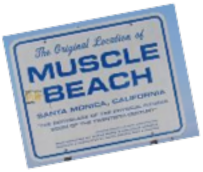|
Sentence TypesQuestionsBeyond simply declaring some information to be a fact, we can use language to ask for information, and sentences that ask for things have a different structure than those that provide information. Most native speakers consider the question system of English to be fairly straight-forward. In the following sequence of activities, you’ll be asked to consider the various types of questions that we use.
Activity 4.5: Question Sort 1 Group the following questions according to their similarities. What principle did you use? Drag and drop separate the two groups onto each side of the line. When you have sorted sentences, click on Check button to check your answer. After multiple tries, click on Solution button for answer.
If you’re like most people, you separated the questions into two groups: those that result in an answer of yes or no, and others that result in answers with various kinds of information. These are the two major divisions of questions in English, YES-NO Questions and Wh- Questions. The Wh- questions are referred to in this way because the majority of the information seeking words begin with the letters wh-, and even the question how contains both a w and an h!
Activity 4.6: Question Sort 2 Group the following questions according to their similarities. What principle did you use? Click on similar sentences to move them across the line. When you have the two groups separated, click on Check button to check your answer. After three tries, a Hint link will appear. After multiple tries, click on Solution button for answer.
All of the questions in Activity 16 are Wh- questions. All Wh- questions seek to obtain a missing piece of information. A speaker knows some information, but not all, and uses a Wh- question to fill in what is missing. Wh- questions follow two different sentence patterns in English. The essential difference is what the questions are seeking information about. If the speaker wants to know information that belongs in the predicate part of a sentence, the subject is present in the questions, but it inverts with the verb (specifically with the auxiliary verb, but we’ll look closer at the verb in the next unit). For example, the speaker of the first question already knows some information: the listener watched something on TV last night. But the speaker would like more information about this situation; specifically, the speaker wants to know the direct object of the verb watch. The listener will respond to the question by filling in the missing information and will say, “I watched Twilight on TV last night.” The direct object is a part of the predicate, so subject-aux inversion is present in the question. Likewise, the last question on the list above also seeks information that is typically located in the predicate, and again the subject-aux inversion is present. The listener will answer with, “I watched it because my Mom thinks vampire movies are silly and because I want to annoy her.” The other sentence pattern in Wh-Questions is used when the speaker is seeking information that is typically present in the subject part of a sentence. In this case, there is no inversion of the subject and an auxiliary verb. Regular word order is used, and a substitute word is placed in the subject in the position the listener will fill in. For question 4 above, “Who plays the main character?,” the listener will answer with, “Taylor Lautner plays the main character.” Notice that the word order is exactly the same. Contrast this question with question 5, which is asking for the direct object, part of the predicate, not the subject. The difference is not the question word used, but the regular location of the missing information and whether it is part of the subject or part of the predicate.
There is another type of sentence that looks like it includes a question, and sentences of this type might best be described as containing embedded questions. An example is I don’t know how the movie ended. This type of sentence is actually a complex sentence, and we will take it up much later. For the moment, we will simple acknowledge that it exists and also point out that it is not a true question since we don’t mark the sentence with a question mark. |
|||||||||||||||||

